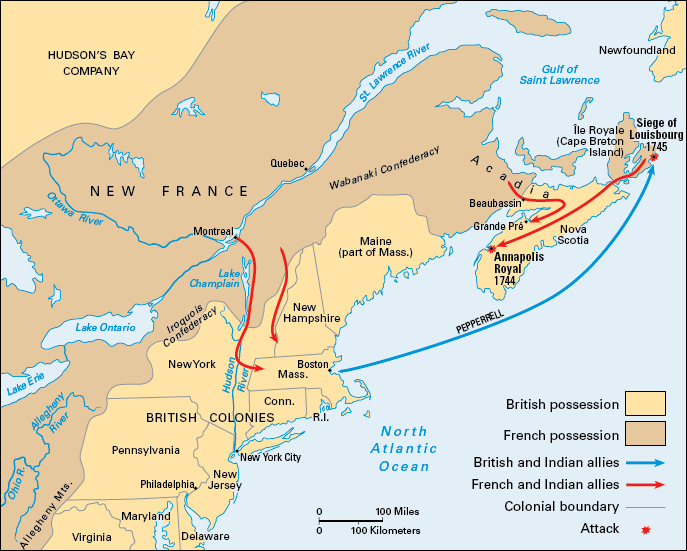King George’s War (1744-1748) was a conflict fought between the British and French in North America . Its central issue was control over Nova Scotia, in eastern Canada . At the war’s end, Nova Scotia remained under British control. Named for Britain’s King George II , the conflict was the third of four wars known as the French and Indian wars .
Background.
Conflicts over colonial expansion and competition over trade and alliances with Native Americans led to fighting between the English and French in North America during the late 1600’s and early 1700’s. The conflicts had roots in power struggles in Europe. Under the treaty that ended Queen Anne’s War (1702-1713), Britain took control of Nova Scotia and other areas of eastern Canada. But tensions remained between the British and French, and each side built military and trading posts throughout the frontier.

In 1740, fighting broke out in Europe over control of the Austrian throne. This conflict, known as the War of the Austrian Succession (1740-1748), mainly pitted the Prussians, French, Spanish, and several German states against the Austrians, British, and Dutch.
The war.
The conflict in Europe spread to North America in 1744, when Britain and France declared war upon one another. French forces attacked the fortified British town of Annapolis Royal in Nova Scotia, but the British retained control of the town. British authorities then made plans to attack the French fortress at Louisbourg on Île Royale (now Cape Breton Island ).
A force of about 4,000 New England militia (citizen army) soldiers besieged the Louisbourg fortress during the spring of 1745. This force, led by William Pepperrell and accompanied by an escort of Royal Navy warships, bombarded the fort in May and June. The French surrendered on June 17. The Louisbourg siege proved to be the most significant battle of King George’s War.
Later in 1745, French troops, with allied indigenous (native) Canadian Iroquois and Wabanaki, attacked English settlements in New England, New York, and Nova Scotia. British colonial troops and allied Mohawk warriors retaliated by raiding French outposts north of Lake Champlain . In 1746, British and colonial forces prepared for a large-scale attack against the city of Quebec , but British authorities called off the offensive.
The end of the war.
The Treaty of Aix-la-Chapelle, signed in October 1748, marked the official end of King George’s War. Under the treaty, the British and French returned the lands each side had lost during the conflict. Louisbourg again came under French control. Hostilities in Acadia among the British, French, and Native Americans continued after 1748, however, leading to the expulsion of French Acadians in 1755.
In 1754, the British and French renewed hostilities in North America. The French and Indian War (1754-1763) was the last in the series of North American wars between the two powers.
